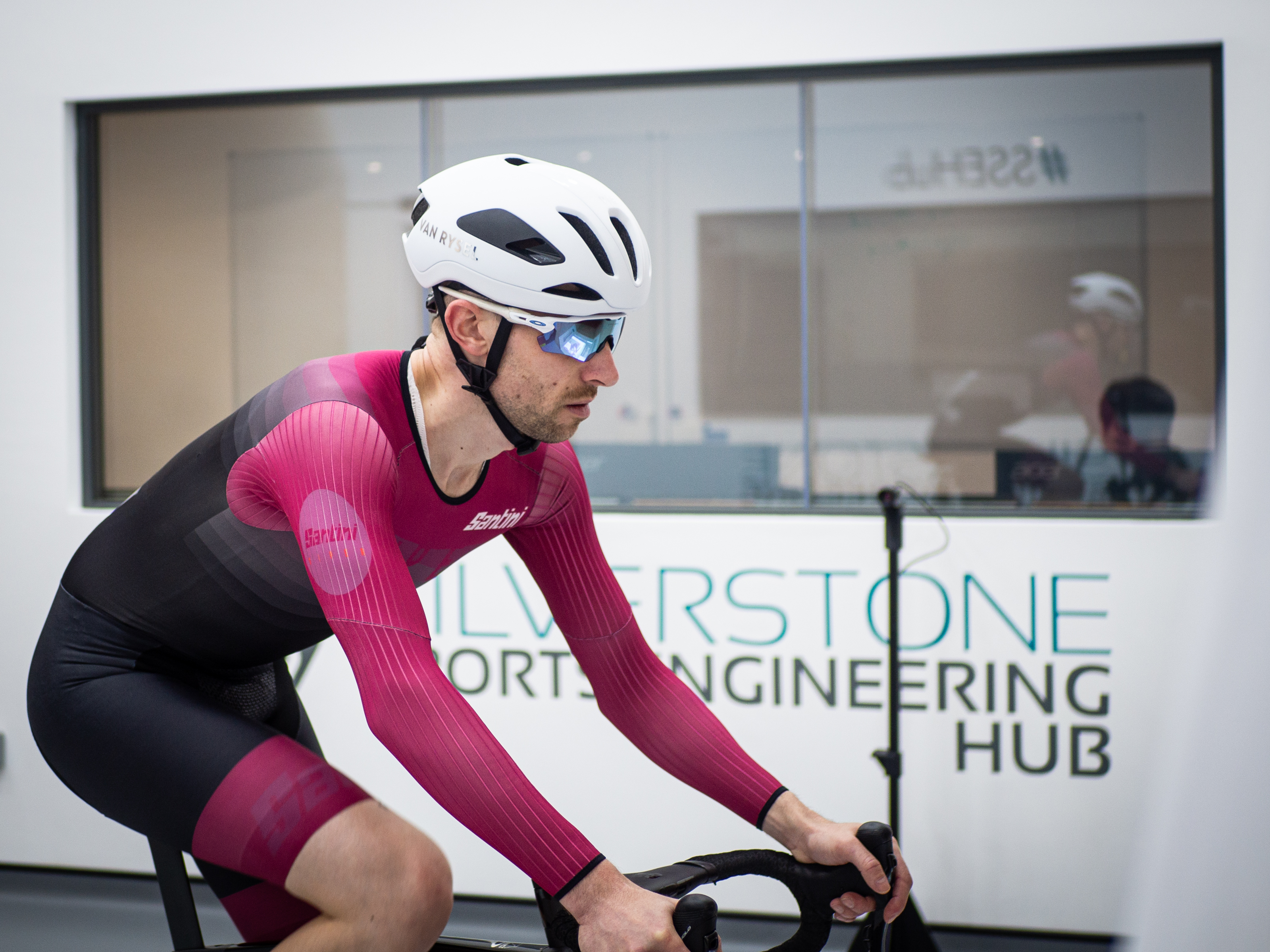
Price: £89.99 / €100 / €120 - MIPS version
Weight: 292 grams - M
Sizes: S/M/L
MIPS: Yes, on pricier model
Colours: White / Black
Van Rysel has hit the ground running this year. The Decathlon-owned brand now sponsors the Decathlon AG2R La Mondiale team, providing them with Van Rysel bikes and a range of the brand's kit and equipment. The team has generated a positive buzz this year for creating a successful and more budget-friendly WorldTour level bike, and the brand's clothing and helmets don't break the bank either.
I'm looking at the Van Rysel FCR helmet here, the brand's performance aero road helmet and the model ridden in WorldTour races like the Tour de France. It's comfortably one of, if not the cheapest helmet used at the top level, coming in at £89.99 / €100. There is also a MIPS equipped model available in Europe for €120, as well as a few other budget models in the range.
We also took the helmet to the Silverstone Sports Engineering Hub wind tunnel this summer to really find out how the helmet performs, and we can now include our findings in our full review of the helmet, which made our best road bike helmets buyers guide as best budget aero road bike helmet.
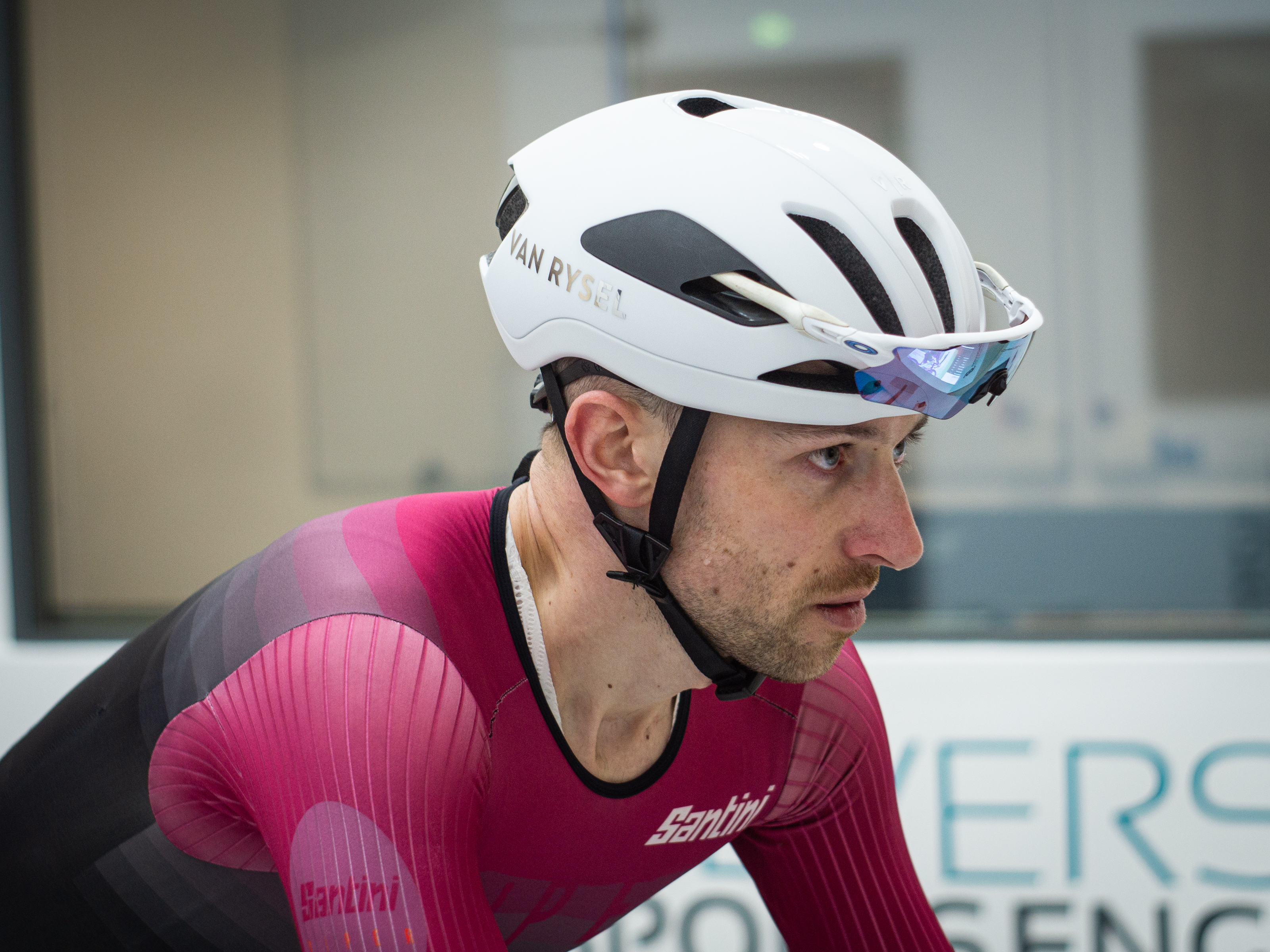
Design and Aesthetics
The FCR is available in white or black. The white version has a matte body with a gloss white centre section, a couple of black inserts and chrome and black logos. I love a white helmet for road use and it ticks that box nicely for me. If black is more your style, the black version is, you guessed it all black, but uses a mix of gloss and matte sections. The chrome logos don’t feature though for a stealthier look. The helmet also comes with a soft drawstring bag which is nice.
Shape-wise, when viewed from above the helmet has a rough teardrop profile and tapers at the rear. It looks similar to the Abus Gamechanger, and I like the shape and styling. I've heard the argument the helmet's round front sits slightly high on the head and doesn't look as good, but like anything, you'll have to decide for yourself whether the styling and shape is for you.
The helmet itself is made in China, and 'designed in Flanders' as the tagline on one of the helmets inside pads states. The helmet shell is 100% polycarbonate, whilst the helmet material itself is, of course, polystyrene. Weight-wise, at 292 grams on my scales, it sits pretty much in line with other performance and aero-road offerings.
The helmet meets the regular EN 1078 standard, which is the standard for commercially available helmets in Europe. The helmet doesn't have a Virginia Tech helmet safety classification currently, which is often regarded as something of a gold standard when it comes to helmet safety and testing. If this is a key issue for you you may need to look elsewhere.
There is a slightly (€20) more expensive MIPS-equipped option available in Europe - I've found a listing for the UK too, but the helmet is unavailable currently. I wonder if it would be cleaner to just charge slightly more, include MIPS tech as standard and tick that particular box for customers.
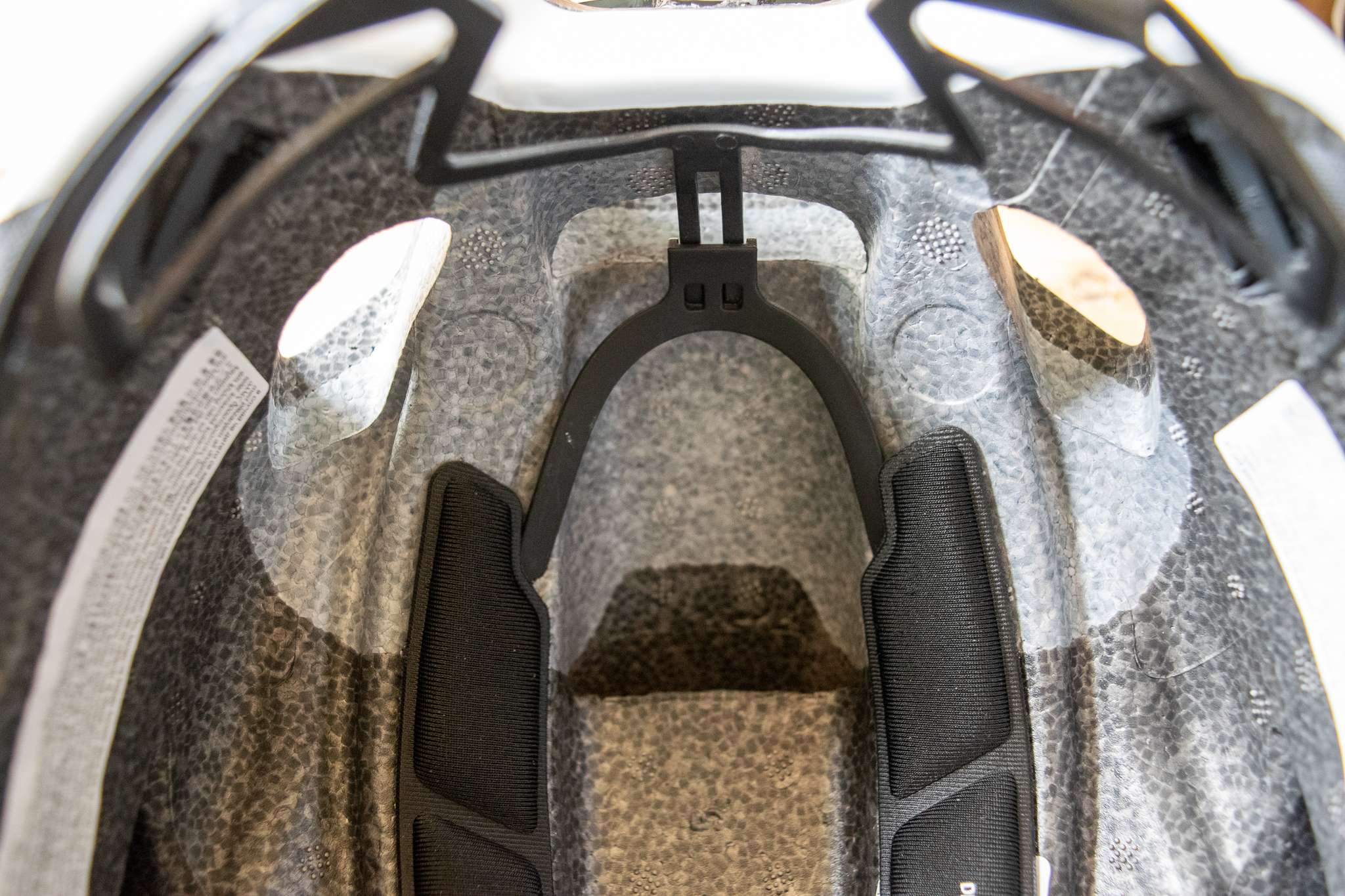
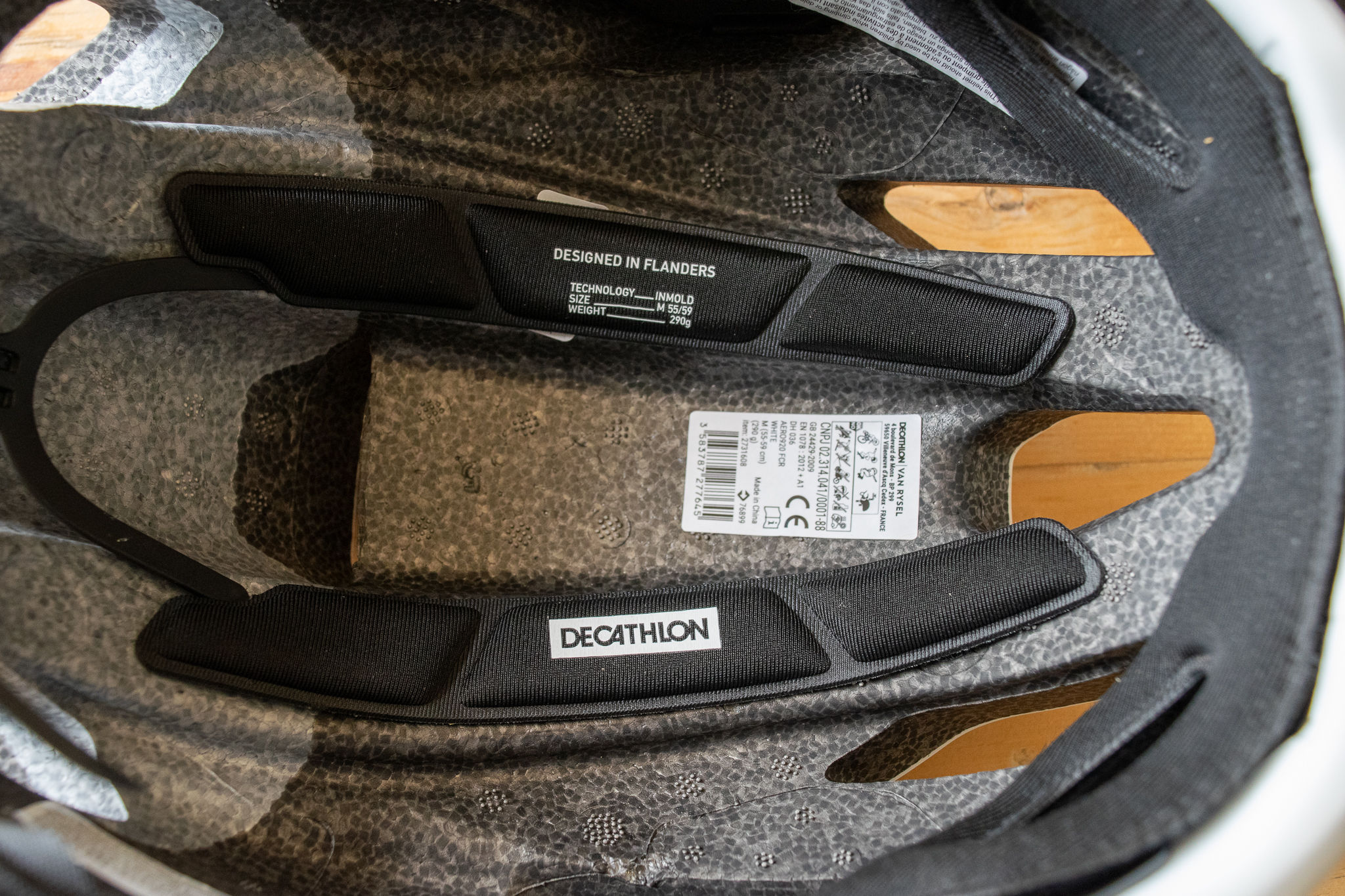
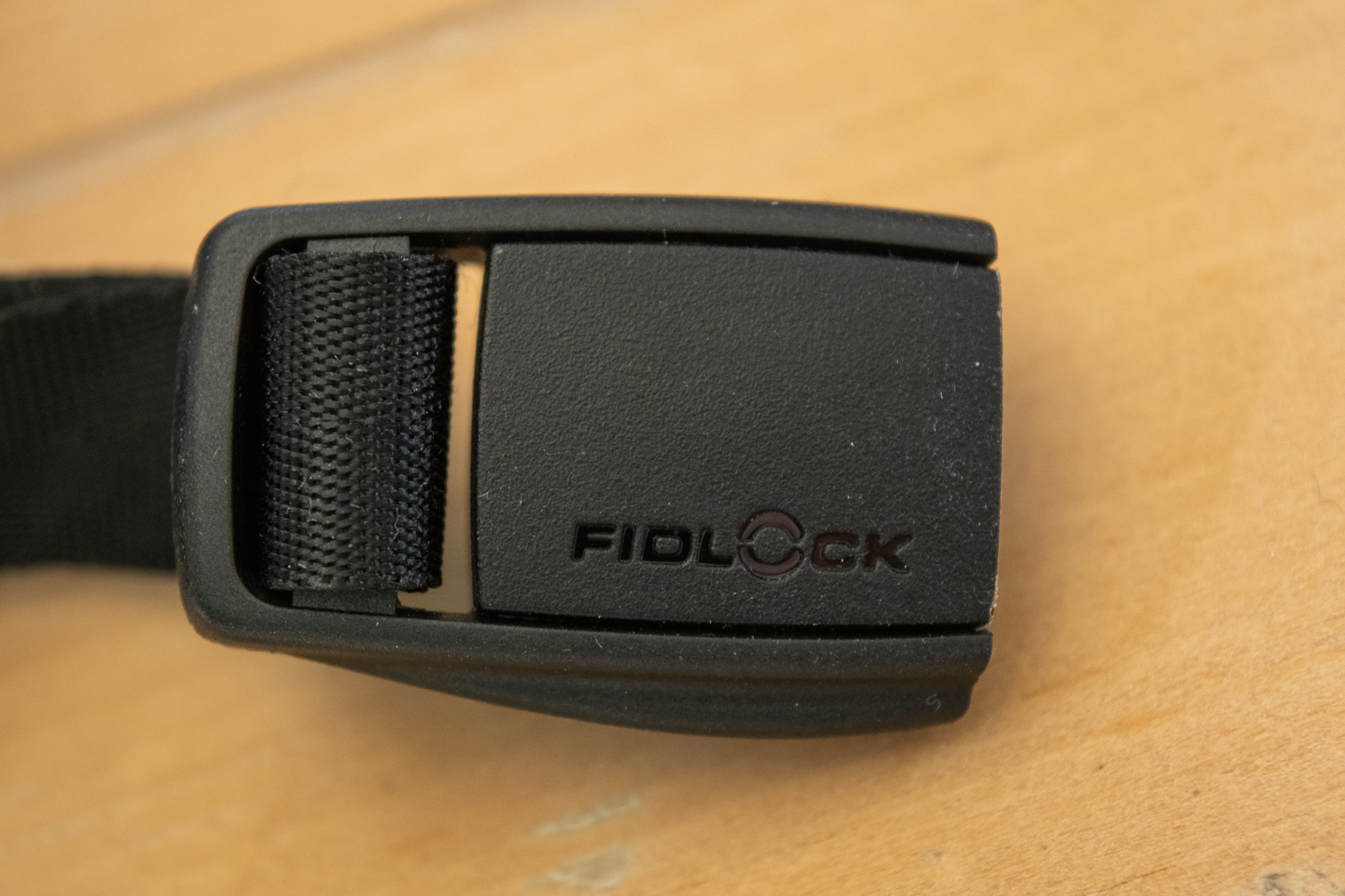
The FCR uses a Fidlock magnet buckle strap, you just slide the two halves together or away from each other to connect and undo them and the magnet does the rest. You can actually just throw the two sides of the straps at each other and if close enough the buckle will do itself up, which is quite fun. The buckle is probably marginally faster than a traditional clip to undo and do up, I like it.
Inside, three large moulded channels correspond with the main vents on the inside and do seem to funnel the air through the helmet well. There are three helmet pads, two in the centre of the helmet and one on the brow, that's it, but they cushion the head effectively and are well placed.
Does the lower price point have any drawbacks in design features or quality? There are only a couple that I’ve noticed in my testing. The chrome Van Rysel stickers do look like they could come off over time or start to look a bit tired and my test unit has a couple of letters that are peeling ever so slightly at the edge. I’d guess it would take a long time, but it’s something at least to be aware of. You could just remove them all if it came to it and the helmet would still look good.
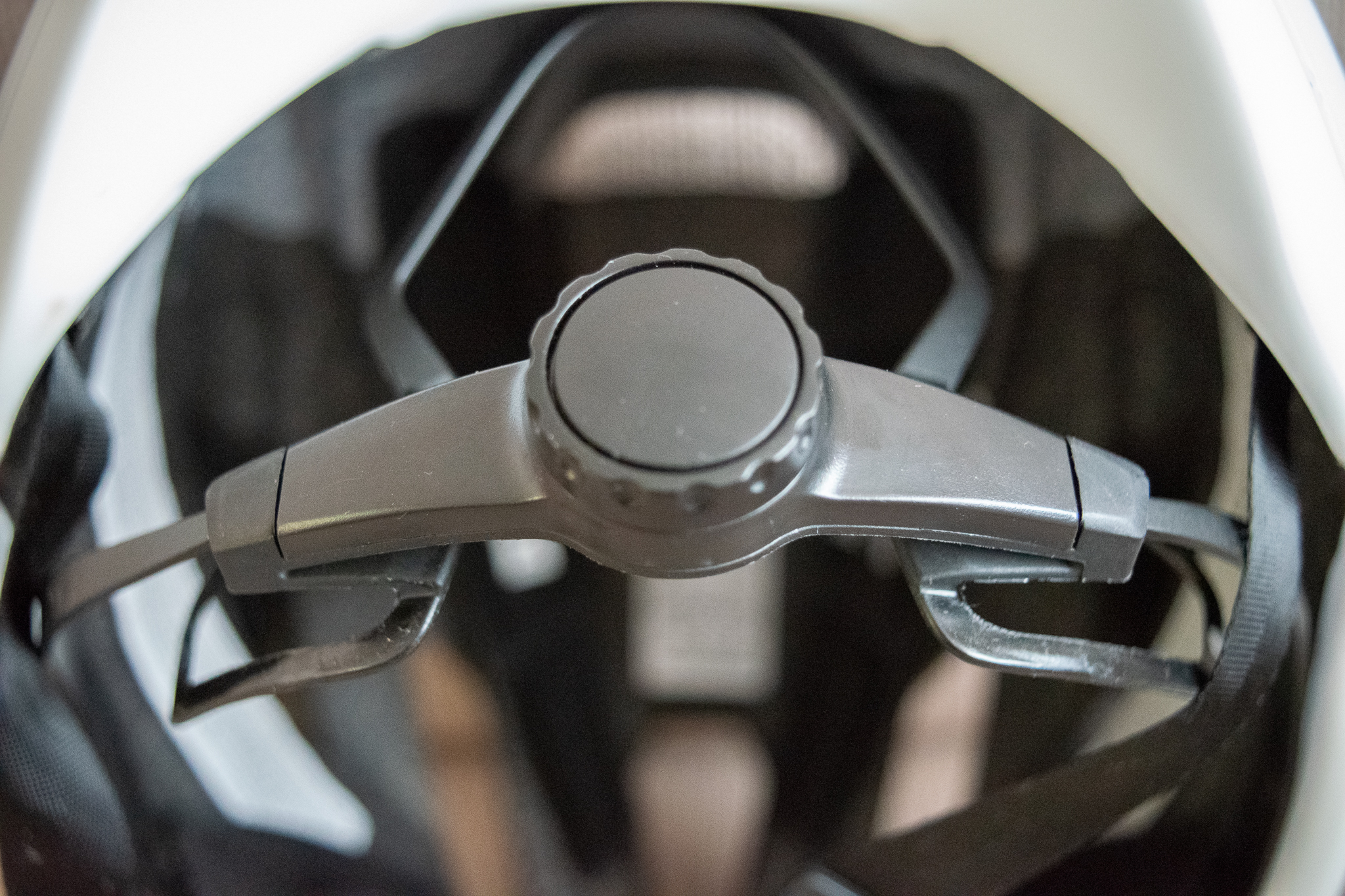
Performance
In use, I've gotten on really well with the FCR. I have no hair, so without any Tadej tufts I sometimes feel awkward helmet features move keenly, but my size Medium test helmet has been comfortable from the off and it hasn't caused me any issues.
As mentioned the Fidlock magnetic buckle is easy to use and has a nice snap that's very user-friendly. The two main pads in the helmet are nice and plush and it feels very comfortable for me when I put it on. I've been alternating between the FCR and Scott Cadence on the road and Specialized Prevail 3 for gravel duties this summer and the FCR does feel plusher, especially given the Prevail's inbuilt 'step', which fouled my head in the same way it did tech editor Josh Croxton's.
Venting is good for me, my most recent ride was on a muggy summer evening, where I completed back-to-back five odd-minute long hill reps and there were zero helmet drips or sweaty 'brow pushes' needed. The vents and helmet in moulding seem to do a good job of funnelling air front to back, overheating or getting overly sweaty just hasn't been an issue for me.
The retention system is perhaps slightly bulkier than some, but I don't feel it looks especially basic. The straps Y junctions (the bit under your ears) are unadjustable and look slightly lower quality than some others, but in use have been no issue for me and they have naturally sat pretty much right where I'd want them. This won't be the case for everyone though so a try before you buy at a local Decathlon may be worth it.
I do like the larger adjustment dial which I find is very easy to locate and adjust one-handed, particularly if you want to adjust the bike. I find the system tightens down evenly and securely without any tight spots or niggly areas, again very comfortable. Overall, yes, some aspects of the finishing aren't quite as plush as other premium helmets, but for me, there's nothing here that's going to cause drama for you. If you want a flasher helmet, spend the cash on one.
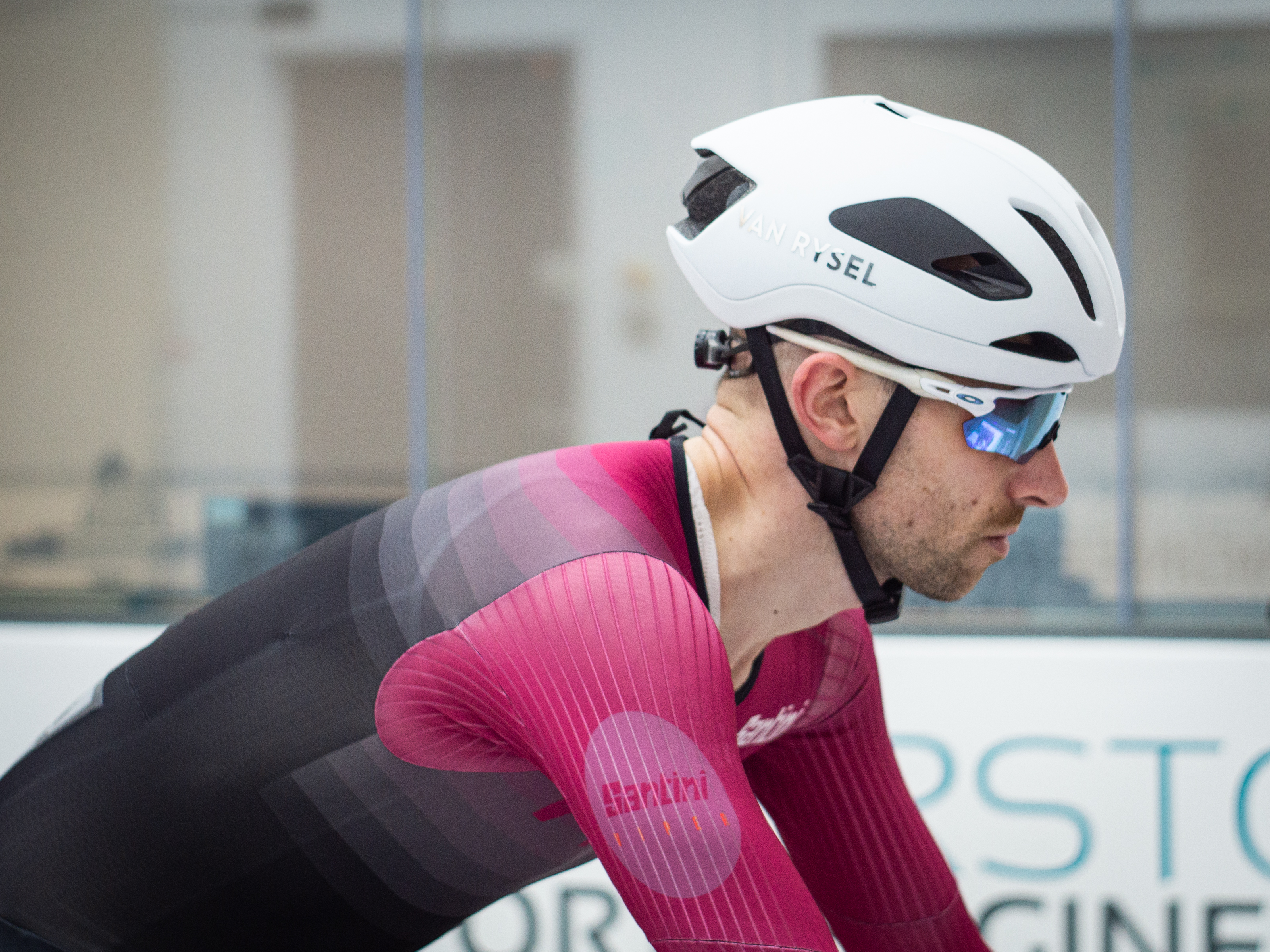
Thanks to our helmet wind tunnel test project earlier in the year, we now have data on a range of popular and prominent helmets on the market to include in our helmet reviews, this is also the case for the FCR and it’s always good to include some hard data for readers instead of trying to quantity any DIY aero testing we do ourselves or something just ‘feeling fast’.
The Van Rysel placed 5th overall in our wind tunnel test at the Silverstone Sports Engineering Hub, beating the likes of the Trek Ballista and Kask Elemento. Head to our best aero helmets guide for more of a breakdown. For the money, you know you're getting a pretty quick helmet and one that’s going to save you a few watts compared to a lot of the competition. If you don’t want to spring for a Specialized Evade and don’t like the look of the POC Procen, get yourself one of these. If you wanted to take things up a notch, the next quickest helmet - for us, was the Scott Cadence, but it’s just over double the price.
We also found placing your sunglasses in the vents at the front of the helmet can negatively affect aero performance compared to placing them at the rear of the helmet, or around your neck etc. I tried this in the wind tunnel as the test rider so can attest to the results. A top tip for all the racers out there.
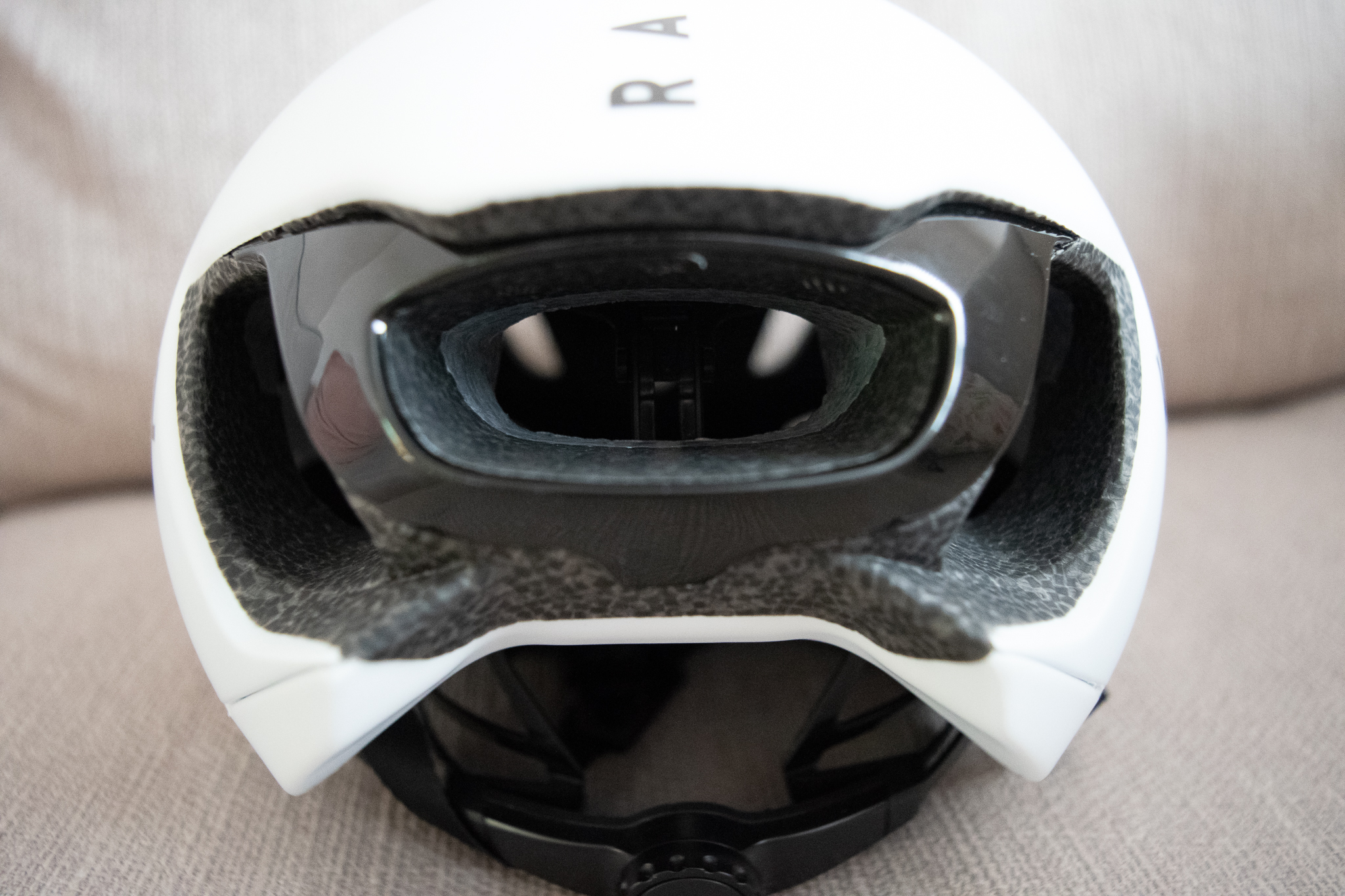
Value
A strong hand for the FCR is the price point, it comes in at £89.99 / €100. In light of our testing and for the money, there isn’t a quicker helmet out there for less cash.
For the price, you're getting a helmet that will bring aero gains on the bike compared to lots of others and that for me looks pretty stylish.
If like me, and probably plenty of other riders out there you're looking for something quick, that will save you a few watts, and that crucially doesn't cost a few hundred quid, you can't really go wrong here.
Some of the finishing isn't quite as good as more premium helmets, and the stickers may fail over time but aside from that, what's not to like?
Verdict
The FCR is a great option for the money if you ask me. It's a competitive weight and I've found it to be comfortable and easy to adjust around my head. I've not experienced any discomfort in it whatsoever.
The helmet has won more than once this year at WorldTour level. On my head at least, in a normal riding position, it tested pretty favourably in our wind tunnel test. It's nice to know you're pulling on a competitive helmet aero-wise, and when that helmet comes in at under £100, it feels all the sweeter. If you like the look of the helmet and don't want to spend too much or want a fast helmet for racing that you don't want to worry about giving a bit of a hammering, this is a solid buy.







